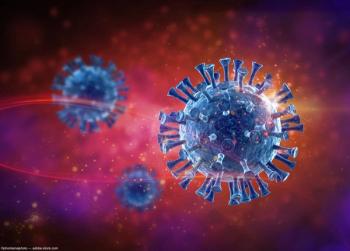
COVID-19: PPE shortages could linger through summer
While ophthalmologists and their staffs continue to face challenges with the availability of proper personal protective equipment amid the COVID-19 pandemic, an internal Federal Emergency Management Agency slideshow detailed that N95 masks may have to be reused into October.
While ophthalmologists and their staffs continue to face challenges with the availability of proper personal protective equipment (PPE) amid the COVID-19 pandemic, an internal Federal Emergency Management Agency (FEMA) slideshow detailed that N95 masks may have to be reused into October.
The slideshow was made public this week during a hearing before the Senate Homeland Security and Governmental Affairs Committee.
Due to the face-to-face nature of examinations and ocular surgery, ophthalmologists continue to be at risk for infection of the coronavirus, making any PPE shortages a concern.
Guidelines
According to the American Academy of Ophthalmology, data about environmental virus contamination and increased awareness of asymptomatic and presymptomatic spread of new infections continue to support the use of mouth, nose, and eye protection.
After looking at COVID-19 data from the World Health Organization (WHO) and CDC, the AAO issued guidelines for ophthalmologists recommending protection of the mouth, nose, and eyes when caring for patients potentially infected with the virus. AAO guidelines recommend personal protective equipment, including gloves, gowns, respiratory protection (N-95 masks, slit-lamp breath shields), and eye protection (goggles).
According to Peter J. McDonnell, MD, chief medical editor of Ophthalmology Times,® and director of the Wilmer Eye Institute, Johns Hopkins University School of Medicine, Baltimore, medical professionals cannot know who is infected (and asymptomatic), who was infected and has recovered with antibodies against the virus, and who is not and has not been infected. As a result, until the time comes when everyone or almost everyone can be tested, extreme caution should be exercised.
As for potential PPE shortages, it can be an issue for some institutions and not for others.
“The procurement folks at my institution inform me that we have an adequate supply of PPE at this time and do not anticipate problems,” McDonnell said.
“The uncertainty, in my opinion, regarding whether there will be a 'second wave' and, if so, the magnitude and timing, makes it difficult to have a high degree of confidence in any projections, no matter how educated the guesses and assumptions that underlying them,” he added.
In an ophthalmology clinic, every clinician should continue to wear goggles or a shield because of the close proximity to patients. This remains important with about 20% to 30% of coronavirus patients being asymptomatic. In hotspot areas, many hospitals require all caregivers to wear N-95 masks.
Many facilities are enabling policies regarding the use, and in some instances, reuse, of PPE.
In some regions of the United States, access to a steady supply of PPE can still prove to be a challenge.
The internal slideshow made public and released by Sen. Maggie Hassan, D-N.H., after a June 9 hearing before the Senate Homeland Security and Governmental Affairs Committee, revealed that FEMA indicated that a portion of the nation’s N95 masks will still need to be reused into October, despite a belief that domestic production growth to hit 180 million in the winter.
This figure does not include commercial donations or state-bought masks.
A key component of the reusable mask production is based on the Battelle decontamination method and the projected production of Battelle. The number of masks that must be reused those being imported are expected to drop as domestic production ramps up, but the agency also assumes that demand for the masks will plateau beginning in July.
Considerations for second wave?
It is not known whether FEMA considered the increasing possibility of a second wave of COVID-19 striking due to states reopening, according to the slideshow.
The slides show the projections anticipated a decline in demand from hospitals. For example, the slides show FEMA expected less demand for surgical masks from June to July. The documents indicate "steadily declining COVID hospitalization rates should reduce daily hospital PPE usage, but demand through summer may remain constant as hospitals and states replenish stockpiles, and to meet reopening requirements."
The outlook seems even more grim for medical gowns. It seems the agency is counting on reusable gowns to pick up much of the slack of U.S. production, which the agency expects to remain steady through July.
The reusable gowns are expected to make up more than half of the supply of gowns beginning in June, the slideshow says. For nitrile gloves, the U.S. medical community could be left to the mercy of foreign countries because there are no domestic producers. In fact, the supply of gloves dipped in April due to “challenges in overseas manufacturing,” according to the slideshow.
The lack of PPE has been a constant refrain from healthcare professionals on the frontlines of the pandemic as many have been forced to make masks at home, wear trash bags instead of medical gowns, and craft their own face shields from household refuse.
Making changes
According to Eric Donnenfeld, MD, founding partner, Ophthalmic Consultants of Long Island and Connecticut, a multi-location ophthalmology practice, clinical professor of ophthalmology at New York University, and a trustee of Dartmouth Medical School, Hanover, NH, the world of ophthalmology has changed dramatically over the past several weeks with the COVID-19 pandemic and the way ophthalmologists interact with patients.
“We are implementing telemedicine and spending a great deal more time speaking with patients over the phone,” he said. Donnenfeld said it is important to continue to evaluate every step of the clinic, operating room and waiting room.
Andrew G. Lee, MD, who is affiliated with the Blanton Eye Institute, Houston Methodist Hospital, and specializes in neuro-ophthalmology, said he suspects that there will be some changes that will be permanent in terms of social interactions (minimizing hand shaking as a greeting, social distancing, more rigorous hand washing).
Newsletter
Don’t miss out—get Ophthalmology Times updates on the latest clinical advancements and expert interviews, straight to your inbox.













































